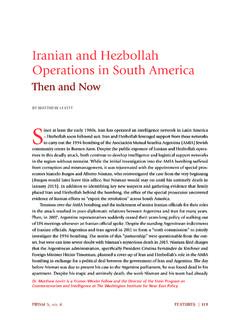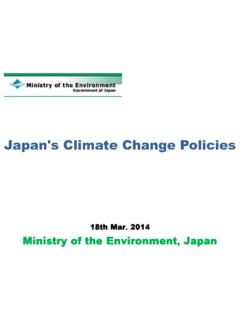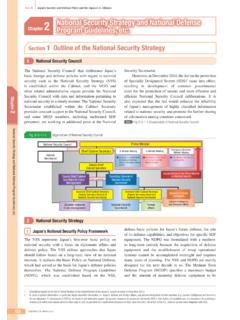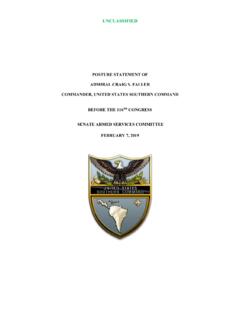Transcription of An Overview of Electricity Sector In Pakistan - ICCI
1 An Overview of Electricity Sector In Pakistan ISLAMABAD CHAMBER OF COMMERCE & INDUSTRY CHAMBER HOUSE: Aiwan-e-Sanat-o-Tijarat Road, Mauve Area, Sector G-8/1, Islamabad, Tel: + 92-51-2250526-2253145, Fax: +92-51-2252950, E-mail: Website: Executive Summery The power Sector in Pakistan is a mix of hydel and thermal units dominated by two vertically integrated public Sector utilities that are Water and Power Development Authority (WAPDA) for all of Pakistan except Karachi, and the Karachi Electric Supply Corporation (KESC) for the City of Karachi and its surrounding areas. There are a number of independent power producers that contributes significantly in Electricity generation in Pakistan .
2 For years, the matter of balancing Pakistan 's supply against the demand for Electricity has remained a largely unresolved matter. Pakistan faces a significant challenge in revamping its network responsible for the supply of Electricity . Due to an unrealistic power tariff, high inefficiencies, low payment recovery and the inability of the government to manage its subsidies mechanism that lead to a serious circular debt issue which is becoming a barrier for future energy Sector investment. The economy is badly affected by Electricity crisis with loss of huge capital. The solution to the current crisis lies in energy conservation at all level in the country. The use of alternate energy such as wind and solar power could be utilized to immediately reduce the shortages, while Electricity projects from coal and large dam could provide a long-term solution to the Electricity shortage.
3 However, China, Iran, India and Tajikistan, Germany, Qatar, Kuwait and some other countries have been offering to export Electricity to Pakistan to overcome the growing Electricity crisis. Abbreviations WAPDA Water and Power Development Authority KESC Karachi Electric Supply Company PEPCO Pakistan Electric Power Company LESCO Lahore Electric Supply Company GEPCO Gujranwala Electric Supply Company FESCO Faisalabad Electricity Supply Company IESCO Islamabad Electricity Supply Company MEPCO Manpower Export Placement Corporation PESCO Peshawar Electric Supply Company HESCO Hyderabad Electric Supply Company QESCO Quetta Electric Supply Company TESCO Tribal Electric Supply Company SEPCO Southern Electric Power Company GENCO Central Power Generation Company NTDC National Transmission & Despatch Company IPP Independent Power producers AEDB Alternative
4 Energy Development Board PAEC Pakistan Atomic Energy Commission PEPCO Pakistan Electric Power Company NEPRA National Electric Power Regulatory Authority PPA Power Purchase Agreement PSO Pakistan State Oil RPP Rental Power Plants DISCO Power Distribution Companies CPP Capacity Purchase Price EPP Energy Purchase Price JEWG Joint Energy Working Group CTGPC China Three Gorges Project Corporation NesPAK National Engineering Services Pakistan CASA Central Asia South Asia HVDC High Voltage Direct Current Table of Contents Ch.#1 Electricity in Pakistan Background Pakistan Electricity Sector Structure Sources of Electricity in Pakistan Total Install Capacity Electricity Consumption Annual Electricity Consumption Sectoral Consumption of Electricity Ch.
5 #2 The role of Independent Power Producers (IPPs) IPP industry in Pakistan Contractual framework of IPPs List of IPPs Risks faced by IPPs Problems of IPPs Ch. # 03: HYDRO ELECTRIC POWER PLANTS Hydro power Potential in Pakistan Hydro power Projects Advantages and disadvantages of hydroelectric power Non-Functional hydroelectric power units Ch.# 04: Rental Power Plants Status of RPPs Government expenditures on RPPs Reasons behind non-operational RPPs Ch.#05: Electricity Tariff Mechanism Tariff determination among DISCOS The IPP Electricity Tariff Tariff Options for IPPs Schedule of Electricity tariff for IESCO Ch.# 06: Solutions to end Electricity shortage Short term measures Long term measures Ch.
6 # 07: Electricity agreements of Pakistan with other countries Pakistan -China Electricity agreement Pakistan -India Electricity agreement Pakistan -Iran Electricity agreement Pakistan -Tajikistan Electricity agreement Power agreements with other countries Conclusion References CHAPTER # 01. Electricity in Pakistan Background: Electricity is considered to be life line of any economy and most vital instrument of socioeconomic development of a country. Electricity is pivotal in running machinery in factories and industrial units, for lighting our cities and powering our vehicles. The challenge of ensuring Electricity access for industries and providing increased access to the poor parts of the population is the key issue for any government.
7 Pakistan s energy infrastructure is not well developed, rather it is considered to be underdeveloped and poorly managed. Currently the country is facing severe energy crisis. Despite of strong economic growth and rising energy demand during past decade, no serious efforts have been made to install new capacity of generation. Moreover, rapid demand growth, transmission losses due to outdated infrastructure, power theft, and seasonal reductions in the availability of hydropower have worsened the situation. Consequently, the demand exceeds supply and hence load-shedding is a common phenomenon through power shutdown.
8 At the time of independence, Pakistan inherited 60MW of power generation capability for a population of million, yielding units per capita consumption. Twelve years later, when WAPDA was created in 1959, the generation capacity had increased to 119 MW. There has been an enormous increase in the demand of energy as a result of industrial development and population growth, in comparison to enhancement in energy production. Supply of energy is, therefore, far less than the actual demand, resultantly crisis has emerged. In 1964-65, the Electricity generation capability rose to 636 MW from 119 in 1959, and power generation to about 2,500 MKWH from 781 MKWH.
9 The rapid progress witnessed a new life to the social, technical and economic structures of the country, mechanized agriculture started, industrialization picked up and general living standards improved. A rapid growth of the Karachi was witnessed in 1990s as big industrial and commercial houses were set up leading to sudden increase in demand for Electricity . Therefore, KESC has been granted the license to generate, transmit and distribute power in its licensed area. In 2000s, annual consumption of Electricity in the residential Sector has increased per customer, while annual consumption by each industrial customer has also reached at peak and widened the demand-supply gap.
10 In 2006, the Asian Development Bank has estimated that 45 percent of Pakistan s population lacked access to Electricity . Electricity crisis worsens in Pakistan in 2008 as shortage of Electricity has increased up to 4000MV. Pakistan 's industrial consumers were facing an electric power deficit due to low water levels at hydroelectric dams. The task of accelerating the pace of power development picked up speed and by 1970, in another five years the generating capability rose from 636 MW to 1331 MW with installation of a number of thermal and hydel power units. In the year 1980 the system capacity touched 3000 MW which rapidly rose to over 7000 MW in 1990-91.






